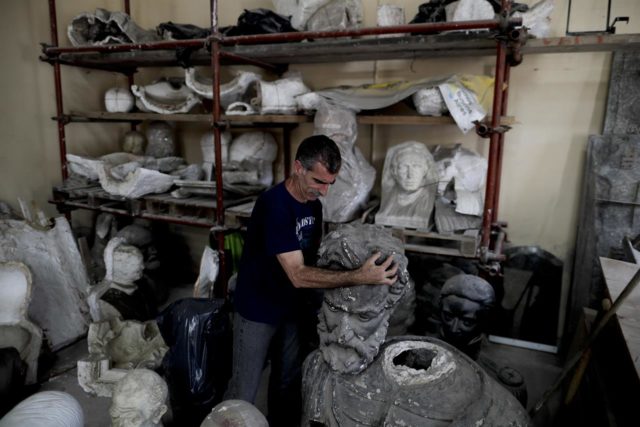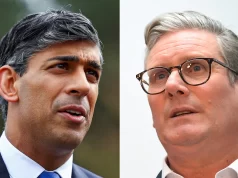Vandalism and attacks on sculptures have increased as frustration simmers over Argentina’s economic crisis.
There are about 2,200 statues and monuments in bronze, marble, stone and granite that beautify the squares, parks and avenues of the Argentine capital and set it apart from other Latin American cities.But the ravages of time, weather and sometimes vandalism has taken its toll on these stone ambassadors of the past.
A headless Anibal Troilo, one of the tango’s greatest composer-performers, rests on a seat holding his bandoneon.
The statue of the Argentine musical icon was vandalized and brought here, a workshop run by the Monuments and Works of Arts department, to be restored to their former glory.
At the workshop, about 15 restorers work carefully to repair stone and marble, cleaning graffiti and moulding missing appendages for the sculptures.”We’d like to have less of this and focus only on preservation of works outdoors, restorations would be due to age, and not for damage done intentionally,” says Jorge Grimaz, who heads coordination at the state-run Monuments and Artworks workshop (MOA). “But I’m proud of my job.”Sometimes their limbs are severed, or they are painted with spray paint or stolen as collector’s items. Grimaz says he can’t understand the motives of the vandals.
“A marble piece has no resale value, so taking away a finger or a hand from a statue, or a bronze part, which in the black market can mean cents, it has no resale sense. We think that this kind of pieces, someone could take them as a souvenir for being there, to keep a memory from an art piece of the city. We imagine that but we really don’t know.”Three restorers pour polyester resin on a rubber mould inside a plaster box to craft a sabre for revolutionary leader Martin Guedes, after the original bronze sabre had been stolenOn the shelves behind the work tables, dozens of busts, hands and other appendages from sculptures are stored ready to be re-attachedPollution and the humidity of the Argentine capital, located on the banks of the Rio de la Plata, affects the sculptures. But vandalism is by far their worst enemy.
The attacks on sculptures have increased as frustration simmers over an economic crisis in Argentina.Even a statue of Argentine soccer star Lionel Messi has been vandalized – three times.These images show the second time it was damaged in January 2017.The statue has been removed and is undergoing restoration by its creator, the restoration is financed by the city government. No date has been set for its return.
Several Argentine heroes and historical figures have suffered a similar fate.The city government spends more than 28 million Argentine pesos (about $767,000) a month cleaning monuments, and removing graffiti, banners, posters and stickers from sculptures.
Carlos Estevez heads the artistic coordination of the MOA workshop.
He says he thinks that some members of the public don’t feel a connection with the statues, many of Buenos Aires’ public artworks were acquired in France in the 19th and 20th centuries.
“One theory we have regarding vandalism is that many people don’t feel connected with art works so they attack them for some reason. This lack of connection or identification makes them losing respect for them,” he says.Although is something we speak about every day, we don’t have a single answer for this, but we start thinking that instead of using the metaphor that we bring here the invalids (damaged statues) I think the sick ones are those who damage the art works. There’s a social problem of those who don’t identify with anything, that don’t accept anything, those whose only motivation is the destruction. Which is highly worrying,” he adds.The workshop is open to visitors, perhaps in an effort to increase public understanding and affection for the city’s statues.








